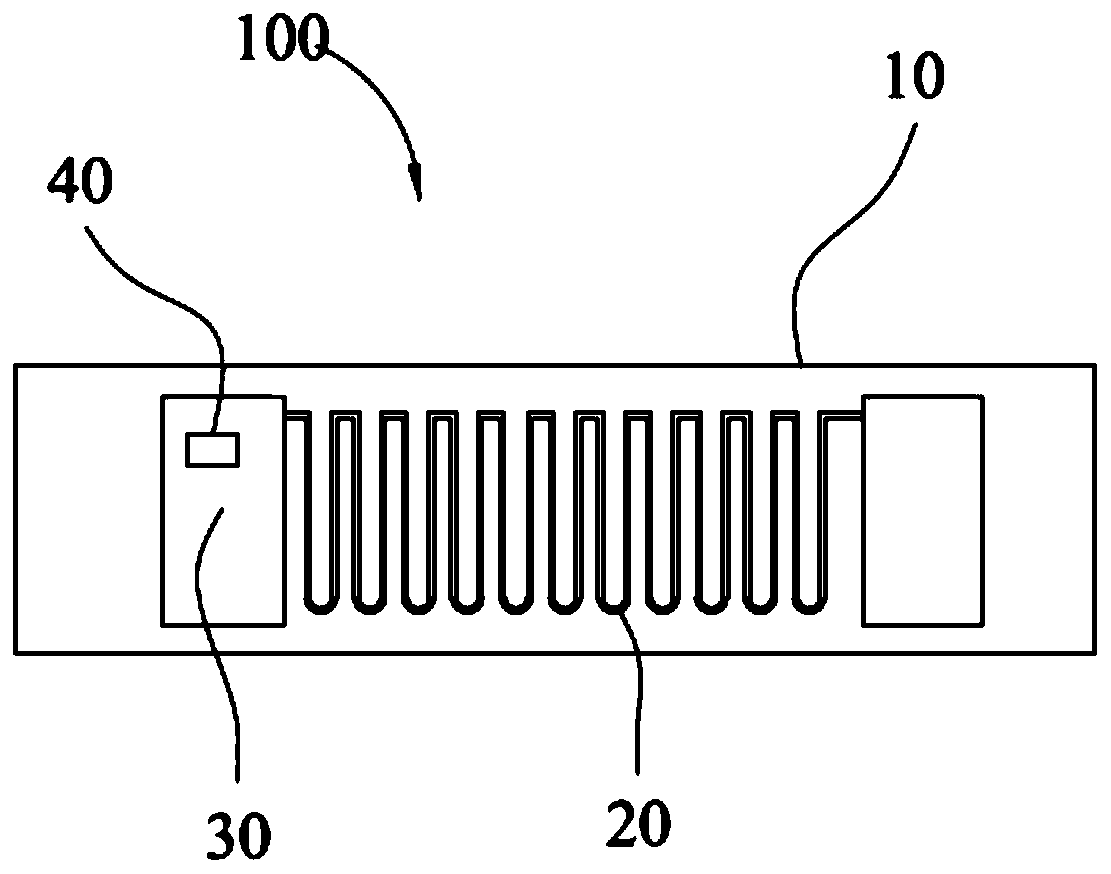Data processing method, electronic tag and radio frequency card reader
A radio frequency card reader and data processing technology, applied in the field of radio frequency identification, can solve problems such as poor reliability of information transmission, and achieve the effect of ensuring legality and security
- Summary
- Abstract
- Description
- Claims
- Application Information
AI Technical Summary
Problems solved by technology
Method used
Image
Examples
Embodiment 1
[0069] see figure 1 , shows the data processing method in the first embodiment of the present invention, applied to electronic tags, including steps S01 to S03.
[0070] Step S01, when a read signal sent by a radio frequency card reader is received, obtain plaintext data corresponding to the read signal.
[0071] Among them, electronic tags, also known as radio frequency tags, are the carrier of RFID (Radio Frequency Identification, radio frequency identification technology). . According to the power supply mode of electronic tags, it can be divided into active tags and passive tags. The energy of active tags comes from its built-in power supply. Tags can carry various sensors, collect information, and form the entrance of the Internet of Things data network collection, but the cost is high and the service life is limited. The energy of the passive tag comes from the radio frequency energy emitted by the tag reader, and it does not need a built-in power supply. It has the a...
Embodiment 2
[0109] Please check Figure 5 , shows the data processing method according to the second embodiment of the present invention, which is applied to an electronic tag, and includes steps S11 to S17.
[0110] Step S11, when receiving the reading signal sent by the radio frequency card reader, acquire plaintext data m corresponding to the reading signal.
[0111] Step S12, obtaining the private key d and the base point coordinate G of the elliptic curve, and randomly generating a random number K, the base point being any point on the elliptic curve.
[0112] Wherein, the base point coordinate G is the coordinate data under the affine coordinate system, and its expression form is G(x, y).
[0113] Step S13 , converting the base point coordinate G in the affine coordinate system to the base point coordinate G in the Jacobi coordinate system according to a preset coordinate transformation formula.
[0114] Wherein, the expression form of the base point coordinate G under the Jacobia...
Embodiment 3
[0164] Please check Figure 6 , shows the data processing method according to the third embodiment of the present invention, applied to a radio frequency card reader, including steps S21 to S22.
[0165] Step S21 , sending a read signal to the electronic tag, and receiving the signature data and plaintext data m fed back by the electronic tag in response to the read signal.
[0166] Among them, the radio frequency card reader is used to identify electronic tags, such as Figure 7 As shown, it mainly includes a control system, and a radio frequency analog front-end composed of a transmitting circuit and a receiving circuit. The control system mainly performs the functions of signal encoding, decoding, encryption and decryption; controls the communication between the application software and the label, and executes the code instructions issued by the system software. The functions of the RF analog front end include: generating high-frequency transmitting power, modulating the ...
PUM
 Login to View More
Login to View More Abstract
Description
Claims
Application Information
 Login to View More
Login to View More - R&D Engineer
- R&D Manager
- IP Professional
- Industry Leading Data Capabilities
- Powerful AI technology
- Patent DNA Extraction
Browse by: Latest US Patents, China's latest patents, Technical Efficacy Thesaurus, Application Domain, Technology Topic, Popular Technical Reports.
© 2024 PatSnap. All rights reserved.Legal|Privacy policy|Modern Slavery Act Transparency Statement|Sitemap|About US| Contact US: help@patsnap.com










